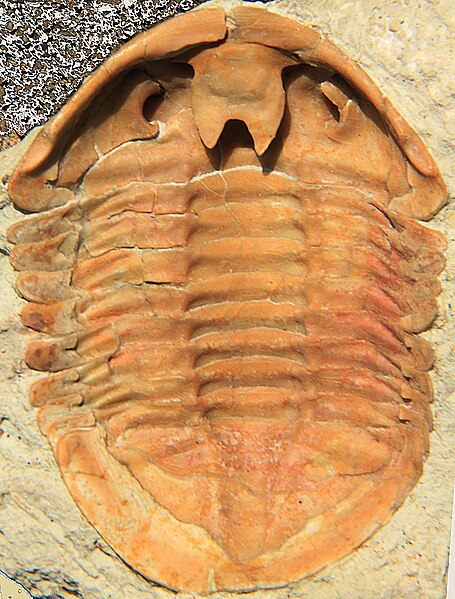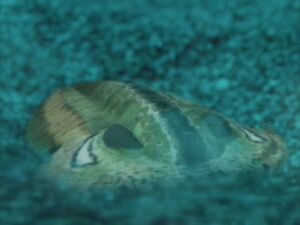Type Species: (There are various species in this Class)
Pronunciation: Trie-low-bite
Meaning: Three Lobes
Geological Layer: (Pre-)Cambrian-Permian
Baramin: Trilobite?
Habitat: Shallow, hot-sea reefs
Era: Pre-Fall-Flood, 6,000-4,350 years ago
Pre-Fall Diet: Plants
Post-Fall Diet: (Depending on species) Bottom-feeder,
predatory, scavenger or filter-feeder
Length: (Depending on species) 6mm to 3 ft.
Height: N/A
Weight: N/A
Description:
Trilobites came in many different forms and sizes, but all
according to their baramins – meaning they reproduced after their own kind.
They somewhat resembled crabs and a strange modern-day animal known as the
horseshoe crab, which isn't related to crabs at all! They had touch armor
plating along their backs called a “shell”; the shell was formed from many
segments, kind of like a knight's armor. This made it both flexible and
durable.
History:
The class “trilobite” was coined in 1771 by Johann Ernst
Immanuel Walch.
Taxonomy:
There were over 17,000 different species of these armored
animals. They all varied in size and are found throughout the fossil record. It
is unknown if they're all in the same baramin or not.
Paleobiology:
Many species of trilobites were bottom-feeders, eating
practically anything they could find on the seafloor – like many crabs. Others
on the other hand, swam through the ocean as filter-feeders, sustaining
themselves on plankton.
Trilobites were a very numerous group of animals and are
found in many fossil records dating to the Flood of Noah's time. But they
weren't without their predators: Anomalocaris often preyed upon
trilobites using their front appendages. To protect themselves, trilobites had
tough shells and compound eyes to see predators approaching.
The shell of a trilobite is made up of multiple segments. On
the thorax (the part between the head and the tail), there could be anywhere
from two to more than 40 segments depending on the species and up to 30 on the tail.
Like modern arthropods (such as insects and spiders), trilobites molted every
so often – they'd bust out of their outer layer of shell while the one
underneath is still soft and can expand. This is how arthropods grow larger.
Extinction:
The Bible says that Noah only took land animals on the ark,
so trilobites would not have been included. They probably went extinct during
the onslaught of the Flood, 4,350 years ago.
Popular Culture:
Despite appearing in numerous books, trilobites aren't very
well known. They've made their appearance in several documentaries such as Chased
by Sea Monsters (2003), Animal Armageddon (2009), and Walking
with Monsters (2005).
 |
| Various trilobite fossils |
 |
| A trilobite fossil |
 |
| A trilobite sifting through sand on the ocean floor looking for food |

No comments:
Post a Comment